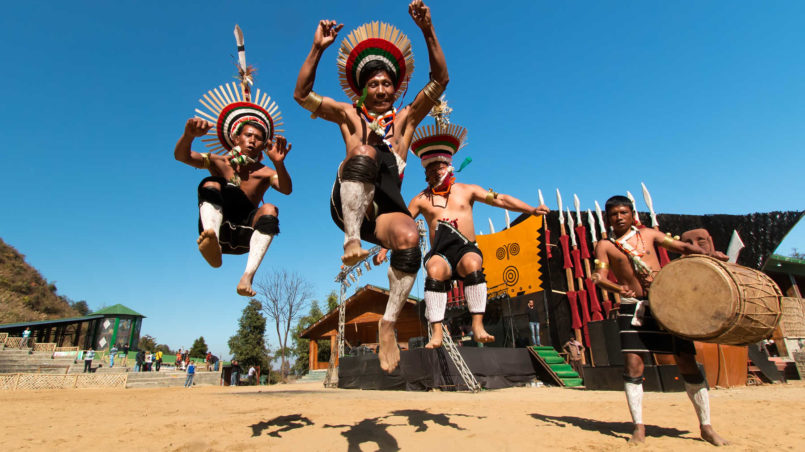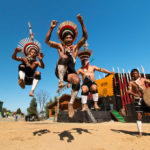The Hornbill Festival

I had heard a lot about the Hornbill Festival from many of my friends. This festival is called the Festival of Festivals and is held every year in Nagaland during the first week of December. Many of my friends had attended and each of them gave me really enticing reviews. After looking at the photos of the festival and after hearing their account of the varied experiences there, I finally made up my mind and planned a visit to Nagaland during December to take part in the Hornbill Festival.
Hornbill Festival is a major event in North East India, and attracts people not only from all over India, but also many foreign tourists. So, it becomes evident that flight tickets and accommodation have to be planned quite early. I did not want to miss the Hornbill Festival at any cost and so I booked both tickets and hotel accommodation six months in advance.
I flew to Assam first and from Guwahati (the capital city of Assam) I took another flight to Dimapur, a city in Nagaland. From Dimapur I had to hire a cab to Kohima, which is the capital of Nagaland. The site of Hornbill Festival is a heritage village named Kisama, which is just 10 km from Kohima. The drive to Kohima was really beautiful and I didn’t realize how two hours could fly by like seconds. On my way to Kohima, I saw many warrior huts atop the cliffs, watching over the lush green valleys all around. Two friends of mine from Nagaland also joined me and we all went to Kisama together.
My friend told me that the festival is named after the majestic bird Hornbill which is revered in Nagaland and there is much tribal folklore about this bird. In fact, the customs about the Hornbill bird are enacted during the festival. I was happy that I had friends from Naga accompanying me to the festival.
Hornbill festival is organized by the State Tourism and the Art & Culture Department of Nagaland. I was told that it would feature traditional tribal dance, arts, folk songs and games. I was really excited and curious by the time I reached Kisama.
When I entered the venue location, I realized that the venue is a very huge amphitheater, surrounded by many traditional huts serving as resting places for the guests, restaurants, museums and community areas.
The Hornbill festival is a celebration of Nagaland’s tradition and cultural heritage. All the major tribal communities inhabiting Nagaland come together at this festival and inter-mingle and indulge in merrymaking by dancing, singing, eating and drinking together. It can be said that it is a way of immortalizing their age old ethos. I felt the festival is held not just to display the traditional culture of the various tribes but it is also a way to ensure unity and solidarity amongst the various tribal communities.
Over the several days of the festival, I watched different tribal communities adorned with their traditional dresses and dancing, enacting their day to day lives and recreating the customs of their tribal festivals. Tribal communities are usually warrior communities and at this festival, one can see the display of warrior traditions through war cries of various Naga tribes and through the pulsating beat of the warrior drums. The heavy pounding sound of the drums, made from huge tree trunks with its core emptied, was actually electrifying.
As a food lover, I loved the Naga delicacies. I hopped from one food stall to another and tried almost all the local delicacies. In particular, I would like to mention the Naga King chili which in 2007 was certified the world’s hottest chili pepper by the Guinness Book of World Records. And you may not believe it but the festival hosts the Naga King chili eating competition. It was actually insane watching people eating those superhot chilies one after another!
Another delicacy that I loved was the local rice beer served at the stalls. Another interesting competition I came across at the festival was the bamboo pole climbing competition which was really entertaining: the bamboo poles were laced with pork fat and that made climbing the poles extremely difficult. It was fun to see the participants trying their best but slipping down, again and again.
Although I do not agree completely, according to many, the real highlight of the festival is the Hornbill National Rock Concert which the largest rock festival in India and attracts rock bands from all across the country. The evenings are full of loud music and dancing. There is no doubt why the Hornbill festival is called the “Festival of Festivals”.
Credits
| Image | Title | Author | License |
|---|---|---|---|
 |
Hornbill_Festival,_Pix_by_Vikramjit_Kakati | Vikramjit Kakati | CC BY-SA 4.0 |

Few of them missing ‘ but good one though.
Thank you .